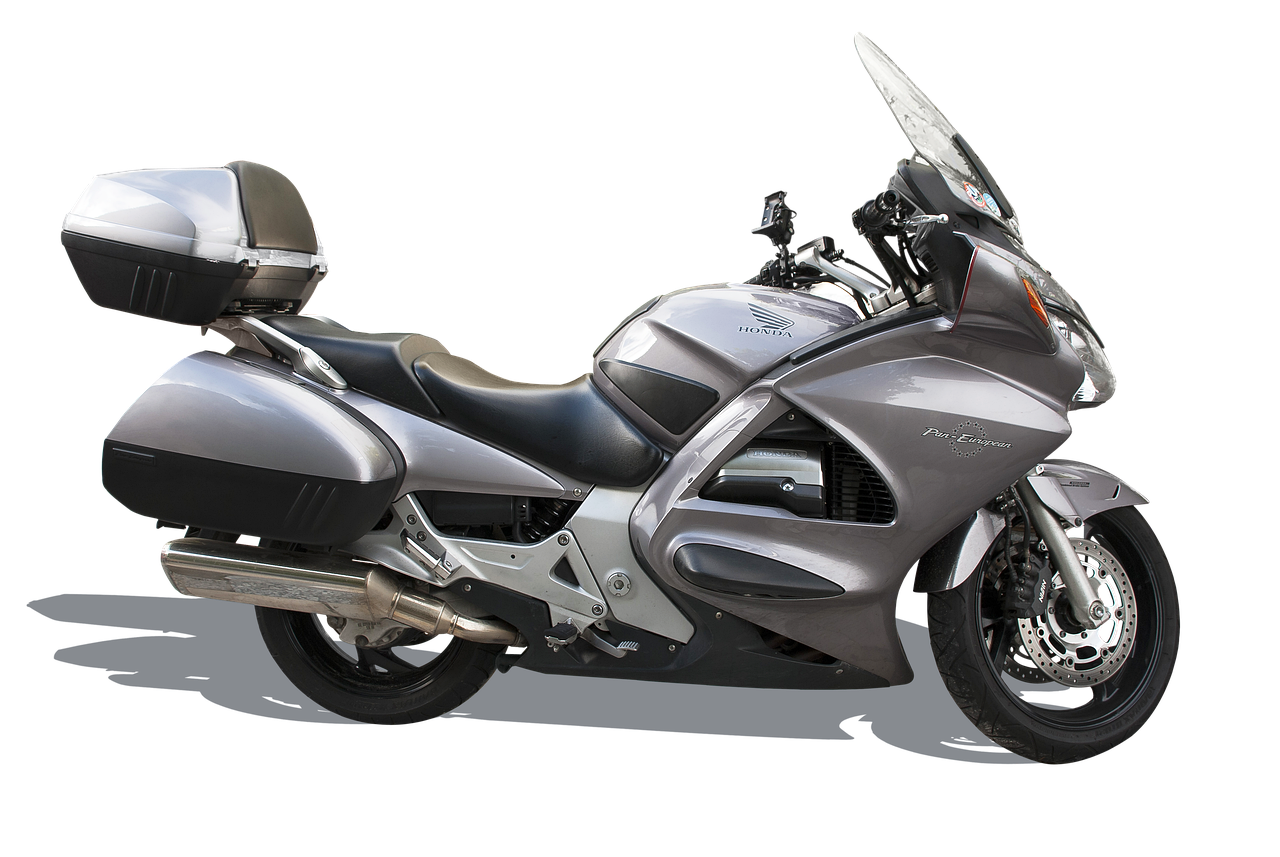The 2011 Honda Civic stands out in the automotive market not just for its reliability but also for its innovative camera integration features. This article delves into how these features have set a new standard for safety, enhanced user experience, and contributed to technological advancements within the automotive industry.
Understanding the Role of Camera Integration in Modern Vehicles
Camera integration has become a vital aspect of vehicle design, significantly enhancing driver safety and improving overall driving experiences. By providing better visibility and awareness of surroundings, these systems help mitigate the risks of accidents.
Notable Features of the 2011 Honda Civic Camera System
- Rearview Camera: Offers a clear view of the area behind the vehicle, crucial for safe reversing.
- Lane Departure Warning: Alerts drivers when they unintentionally drift from their lane.
- Parking Assist: Utilizes sensors to guide drivers through tight parking situations.
How the Rearview Camera Enhances Safety
The rearview camera activates when the Civic is in reverse, displaying a live feed on the dashboard screen. This feature is essential for avoiding obstacles and pedestrians, significantly reducing blind spots and enhancing driver situational awareness.
The Importance of Lane Departure Warning Systems
This system is designed to alert drivers if they drift out of their lane without signaling, promoting safer driving habits and reducing the likelihood of collisions.
Parking Assist Technology: Making Parking Easier
The parking assist feature in the 2011 Honda Civic employs sensors to detect nearby obstacles and provides visual and audio cues to help drivers park safely. This technology minimizes the risk of accidents in crowded areas.
Impact of Camera Integration on Driver Behavior
Research indicates that the presence of camera systems positively influences driver behavior, encouraging safer practices and greater caution on the road.
Comparative Analysis: 2011 Honda Civic vs. Competitors
When compared to competitors in its class, the 2011 Honda Civic excels in camera integration, offering features that significantly enhance both safety and user experience.
Safety Ratings and Consumer Feedback
Safety ratings from organizations like IIHS and NHTSA affirm the effectiveness of the Civic’s camera systems, while driver reviews highlight increased confidence in parking and maneuvering.
The Future of Camera Integration in Automobiles
As technology advances, the future of camera integration in vehicles promises even more sophisticated features, such as artificial intelligence and machine learning, aimed at enhancing safety and convenience for drivers.

Understanding the Importance of Camera Integration
Camera integration in modern vehicles has become a crucial component in enhancing road safety and improving the driving experience. By equipping cars with advanced camera systems, manufacturers aim to provide drivers with better visibility and heightened situation awareness. This technological advancement significantly reduces the risk of accidents, making roads safer for everyone.
One of the primary benefits of camera integration is its ability to eliminate blind spots. Traditional mirrors can only provide limited views, often leaving critical areas around the vehicle unseen. In contrast, camera systems offer a wide-angle perspective of the surroundings, allowing drivers to spot obstacles, pedestrians, and other vehicles more effectively. This enhanced visibility is especially vital during maneuvers like reversing or changing lanes, where the risk of collisions is higher.
Moreover, camera systems contribute to the overall driving experience by incorporating features such as guidance lines and dynamic feedback. For instance, many rearview cameras come equipped with grid lines that help drivers gauge distances accurately, making parking in tight spaces much easier. Additionally, the integration of lane departure warning systems alerts drivers if they unintentionally drift out of their lane, further promoting safer driving habits.
Furthermore, the presence of cameras in vehicles can lead to a positive shift in driver behavior. With the added confidence that comes from improved visibility, drivers are more likely to engage in cautious driving practices. This shift not only benefits individual drivers but also contributes to overall road safety, as fewer accidents result in safer communities.
In summary, the integration of camera systems in vehicles is a transformative step towards enhancing safety on the roads. By providing better visibility and situational awareness, these technologies significantly reduce the potential for accidents and improve the overall driving experience.

Key Features of the 2011 Honda Civic Camera System
The 2011 Honda Civic is renowned for its innovative camera system, which significantly enhances driver safety and convenience. This article delves into the key features of the camera integration, illustrating how they contribute to a safer driving experience.
- Rearview Camera: The rearview camera is a pivotal feature that provides drivers with a clear view of the area behind the vehicle. This functionality is activated when the car is in reverse, displaying a live video feed on the dashboard screen. It helps in avoiding obstacles and pedestrians, making reversing and parking safer.
- Lane Departure Warning System: This system is designed to alert drivers when they unintentionally drift out of their lane. By providing visual and audio warnings, it encourages safer driving habits and minimizes the risk of collisions, particularly on highways.
- Parking Assist Features: The parking assist technology in the 2011 Honda Civic utilizes a combination of sensors and cameras to guide drivers during parking maneuvers. This feature is especially beneficial in tight spaces, reducing the likelihood of accidents and vehicle damage.
Each of these features plays a crucial role in enhancing the overall driving experience. The rearview camera not only improves visibility but also significantly reduces blind spots, while the lane departure warning system promotes attentiveness by alerting drivers to potential hazards. Furthermore, the parking assist technology alleviates the stress associated with parking in crowded areas, providing peace of mind.
Incorporating these advanced camera systems, the 2011 Honda Civic sets a new standard for safety and convenience in the automotive industry. As technology continues to evolve, the integration of such features is expected to become increasingly common, paving the way for safer driving environments.
Rearview Camera Functionality
The rearview camera in the 2011 Honda Civic represents a significant advancement in automotive safety technology. This feature is not merely an added convenience; it plays a crucial role in enhancing driver awareness and preventing accidents during reversing and parking maneuvers. By providing a clear and unobstructed view of the area behind the vehicle, the rearview camera helps drivers make informed decisions, reducing the risks associated with blind spots.
When the vehicle is shifted into reverse, the rearview camera activates automatically, displaying a live feed on the dashboard screen. This real-time view allows drivers to see obstacles, pedestrians, and other vehicles that may be in their path. The high-resolution display ensures that the images are clear, even in low-light conditions, which is essential for safe navigation in various environments.
Moreover, the camera system is designed with user-friendly features, such as grid lines that assist drivers in gauging distances. These guidelines help in accurately positioning the vehicle while reversing, making it easier to park in tight spaces. The rearview camera not only enhances safety but also boosts confidence for drivers, particularly those who may be less experienced.
In addition to improving visibility, the rearview camera contributes to a more relaxed driving experience. Many drivers report feeling less anxious when parking or reversing, knowing they have a reliable tool to assist them. This technology is especially beneficial in urban environments where space is limited and the risk of colliding with unseen objects is heightened.
In summary, the rearview camera functionality in the 2011 Honda Civic is a vital component of modern vehicle safety systems. By offering enhanced visibility and ease of use, it not only protects drivers and passengers but also promotes safer driving habits overall.
How the Rearview Camera Works
The rearview camera system in the 2011 Honda Civic is an essential safety feature designed to enhance the driving experience by providing a clear view of the area behind the vehicle. This system is particularly useful when maneuvering in tight spaces or reversing out of driveways. By integrating advanced technology, the rearview camera aims to minimize the risk of accidents and improve overall safety.
When the vehicle is shifted into reverse, the rearview camera activates automatically, displaying a live video feed on the dashboard screen. This real-time visual aid allows drivers to see any obstacles or pedestrians that may not be visible through the rearview mirror alone. By incorporating a wide-angle lens, the camera captures a broader field of view, significantly reducing blind spots.
In addition to providing visual feedback, the rearview camera system often includes grid lines on the display. These lines assist drivers in judging distances and angles, making it easier to navigate tight spots. As the driver turns the steering wheel, the grid lines adjust accordingly, providing a dynamic guide that enhances precision during parking maneuvers.
Furthermore, the integration of this technology promotes safer driving habits. By encouraging drivers to rely on visual cues from the rearview camera, it fosters a more cautious approach to reversing. This is especially beneficial in urban environments where pedestrians and cyclists may be present.
In summary, the rearview camera in the 2011 Honda Civic is not just a convenience; it is a vital safety tool that enhances driver awareness and confidence. By providing a live feed of the area behind the vehicle, it helps drivers navigate safely and avoid potential accidents, making it a standard feature that reflects modern automotive safety standards.
Benefits of Rearview Cameras
Rearview cameras are becoming an essential feature in modern vehicles, significantly enhancing safety and driving experience. These cameras provide a clear view of the area behind the vehicle, which is crucial during reversing and parking maneuvers. Here are some of the key benefits:
- Reduction of Blind Spots: One of the most significant advantages of rearview cameras is their ability to minimize blind spots. Traditional side mirrors can often fail to capture areas directly behind the vehicle. Rearview cameras fill this gap, providing a wider field of view and allowing drivers to see obstacles or pedestrians that might otherwise go unnoticed.
- Enhanced Driver Awareness: With a real-time video feed displayed on the dashboard, drivers gain immediate visual information about their surroundings. This heightened awareness is crucial in urban settings or crowded parking lots, where the risk of accidents is considerably higher.
- Accident Prevention: Statistics indicate that vehicles equipped with rearview cameras are involved in fewer accidents than those without. By giving drivers a clearer view of their surroundings, these systems help prevent collisions, particularly when reversing out of driveways or parking spaces.
- Assistance in Parking: Rearview cameras often come with grid lines or markers that help drivers gauge distance and angle while parking. This feature is especially beneficial in tight spaces, reducing the likelihood of scrapes and dents.
- Increased Confidence: Many drivers report feeling more confident when reversing and parking with the aid of a rearview camera. This confidence can lead to a more relaxed driving experience and encourage safer driving habits overall.
In summary, rearview cameras are not just a luxury; they are a vital safety feature that enhances driver awareness, reduces blind spots, and contributes to overall road safety. By integrating this technology, vehicles like the 2011 Honda Civic set a new standard for safety in the automotive industry.
Lane Departure Warning System
The Lane Departure Warning System (LDWS) is a critical safety feature in modern vehicles, including the 2011 Honda Civic. This innovative system is designed to enhance driver awareness and prevent unintended lane changes, which can lead to serious accidents. By utilizing advanced sensors and cameras, the LDWS monitors the vehicle’s position within the lane markings on the road.
When a driver unintentionally drifts out of their lane without signaling, the system promptly alerts them through visual and audible warnings. This immediate feedback encourages drivers to correct their course, thereby promoting safer driving habits. The implementation of the LDWS is particularly beneficial for long-distance travelers and those who may experience fatigue or distraction while driving.
In addition to enhancing safety, the Lane Departure Warning System contributes to a more relaxed driving experience. Drivers can focus more on the road ahead, knowing that the system is actively monitoring their lane position. This feature is especially valuable in complex driving environments, such as highways and busy urban areas, where maintaining lane discipline is crucial.
Furthermore, studies have shown that vehicles equipped with lane departure warning systems tend to have lower accident rates compared to those without. This statistic underscores the importance of such technology in the automotive industry, as it not only protects drivers but also enhances overall road safety for all users.
Overall, the Lane Departure Warning System is a testament to the advancements in vehicle safety technology. As we continue to embrace these innovations, we can expect to see further improvements in driver assistance systems, ultimately leading to a future with fewer accidents and safer roads.

Parking Assist Features in the 2011 Honda Civic
The 2011 Honda Civic is equipped with innovative parking assist features that significantly enhance the driving experience. These technologies are designed to simplify the process of parking, particularly in tight urban environments where space is limited. By utilizing advanced sensors and cameras, the Civic helps drivers maneuver with confidence and precision.
Understanding Parking Assist Technologies
Parking assist technologies utilize a combination of ultrasonic sensors and cameras to detect obstacles around the vehicle. When engaged, these systems provide real-time feedback to the driver, including visual and audio alerts, which are crucial for avoiding potential collisions. This integration not only enhances safety but also improves the overall convenience of parking.
How Parking Sensors Enhance Safety
- Parking sensors are strategically placed around the vehicle to monitor the proximity of nearby objects.
- When the vehicle approaches an obstacle, the system emits a series of beeping sounds that increase in frequency as the driver gets closer.
- This auditory feedback allows drivers to adjust their maneuvers accordingly, minimizing the risk of accidents.
Benefits of Parking Assist Systems
- Reduced Stress: Parking assist features alleviate the anxiety often associated with parallel parking or navigating tight spaces.
- Protection Against Damage: By providing alerts, these systems help prevent dents and scratches, preserving the vehicle’s aesthetic and resale value.
- Enhanced Confidence: Drivers can feel more assured when parking, knowing they have an additional layer of assistance.
Real-World Applications
In real-world scenarios, the parking assist features of the 2011 Honda Civic have been praised for their effectiveness. Users report that the system significantly reduces the time and effort required to park, especially in congested areas. The integration of these technologies reflects Honda’s commitment to safety and innovation, setting a standard for future vehicles.
How Parking Sensors Work
Parking sensors are an innovative technology designed to assist drivers during parking maneuvers. These sensors are strategically placed around the vehicle and play a crucial role in enhancing safety and convenience. By detecting obstacles in the vicinity, parking sensors provide both audio and visual alerts to the driver, effectively reducing the likelihood of accidents and damage to the vehicle.
The operation of parking sensors is relatively straightforward yet highly effective. When the vehicle is put in reverse or when the parking mode is activated, the sensors begin to scan the surrounding area. They use ultrasonic or electromagnetic waves to detect objects within a specified range. Once an obstacle is detected, the system alerts the driver through a series of beeps that increase in frequency as the vehicle gets closer to the object.
- Ultrasonic Sensors: These sensors emit sound waves to measure the distance to nearby objects. They are commonly used in many modern vehicles.
- Electromagnetic Sensors: These sensors create an electromagnetic field around the vehicle and detect changes in the field caused by nearby objects.
- Camera-Based Systems: Some advanced systems integrate cameras that provide a visual representation of the area behind the vehicle, often displayed on the dashboard screen.
Parking sensors offer numerous advantages for drivers. They significantly enhance driver awareness by providing real-time feedback about the proximity of obstacles. This feature is especially beneficial in tight parking spaces or crowded areas, where visibility may be limited. Furthermore, the integration of parking sensors can lead to a reduction in minor accidents, such as bumps and scrapes, which can be costly to repair.
In practice, drivers who utilize parking sensors report a greater sense of confidence when parking. The combination of audio alerts and visual cues allows them to make informed decisions quickly, ensuring a safer parking experience for both the vehicle and surrounding pedestrians. This technology is rapidly becoming a standard feature in many vehicles, reflecting a growing commitment to enhancing road safety.
Advantages of Parking Assist Systems
Parking assist systems are becoming an essential feature in modern vehicles, particularly for those navigating through congested urban environments. These advanced technologies not only enhance the driving experience but also significantly improve safety for both drivers and pedestrians.
One of the primary benefits of parking assist systems is the reduction of stress associated with parking. In crowded areas, finding a parking spot can be a daunting task. With the assistance of sensors and cameras, drivers can easily identify available spaces and receive guidance on how to maneuver into them. This streamlined process allows for a more relaxed driving experience, eliminating the anxiety often felt in tight parking situations.
Moreover, these systems play a crucial role in minimizing the risk of dents and scratches on vehicles. By providing real-time feedback on the proximity of obstacles, parking assist technologies help drivers avoid collisions with other vehicles, curbs, and stationary objects. This feature is particularly beneficial in urban settings where space is limited, and the potential for damage is high.
| Feature | Benefit |
|---|---|
| Obstacle Detection | Alerts drivers to nearby objects |
| Guided Parking | Assists with steering into tight spaces |
| Real-time Feedback | Provides visual and audio cues |
Additionally, parking assist systems can enhance overall vehicle safety by reducing the likelihood of accidents during parking maneuvers. By alerting drivers to potential hazards, these systems promote safer driving habits and encourage greater awareness of the surrounding environment.
In conclusion, the advantages of parking assist systems extend beyond mere convenience. They offer significant safety improvements, reduce the risk of vehicle damage, and alleviate the stress of parking in crowded areas. As technology continues to advance, these systems are likely to become even more sophisticated, further enhancing the driving experience.

Impact of Camera Integration on Driver Behavior
The integration of camera systems in vehicles, particularly in models like the 2011 Honda Civic, has significantly transformed driver behavior. By enhancing visibility and providing critical information, these systems have been shown to foster safer driving practices and promote a culture of caution among drivers.
One of the most notable aspects of camera integration is its ability to assist drivers in making informed decisions. For instance, the rearview camera not only provides a clear view of the area behind the vehicle but also helps in eliminating blind spots that often lead to accidents. This feature encourages drivers to check their surroundings thoroughly before reversing, thereby reducing the likelihood of collisions.
Moreover, the lane departure warning system serves as a vital safety net. By alerting drivers when they unintentionally drift out of their lane, it reinforces the importance of staying alert and focused on the road. This constant feedback loop encourages a more cautious driving style, as drivers become more aware of their positioning within the lane.
In addition to these features, the parking assist technology in the 2011 Honda Civic exemplifies how camera systems can ease the stress of parking in tight spaces. With sensors detecting obstacles and providing real-time alerts, drivers can navigate challenging parking situations with greater confidence. This capability not only enhances convenience but also minimizes the risk of minor accidents and vehicle damage.
Research has indicated that such technological advancements lead to a marked improvement in driver behavior. Drivers equipped with these camera systems report feeling more secure and less anxious while driving, which in turn encourages them to adhere to traffic rules and regulations more diligently. With the integration of cameras, the 2011 Honda Civic not only sets a benchmark for safety but also cultivates a more responsible driving environment.
As the automotive industry continues to innovate, the importance of camera integration in promoting safety and enhancing driver behavior will undoubtedly grow, paving the way for even more advanced features in future vehicle models.

Comparing the 2011 Honda Civic to Competitors
The 2011 Honda Civic has made a significant mark in the automotive industry, particularly when it comes to its camera integration features. These features not only enhance the driving experience but also set a new benchmark for safety standards in vehicles within its class.
One of the standout features of the 2011 Honda Civic is its advanced camera system, which includes a rearview camera, lane departure warning, and parking assist technologies. These features are designed to improve visibility and situational awareness, thereby reducing the risk of accidents.
- Enhanced Visibility: The rearview camera provides a clear view of the area behind the vehicle, crucial for safe reversing.
- Live Feed Display: Activating when the car is in reverse, this system displays a live feed on the dashboard screen, helping to avoid obstacles.
- Reduced Blind Spots: The camera significantly minimizes blind spots, allowing for safer maneuvers.
The lane departure warning system in the 2011 Honda Civic alerts drivers when they unintentionally drift out of their lane. This feature is vital for promoting safer driving habits and reducing the likelihood of collisions.
Parking assist technologies in the Civic help drivers navigate tight spaces effortlessly. Utilizing sensors and cameras, these systems guide drivers during parking maneuvers, enhancing overall safety.
Parking sensors detect obstacles around the vehicle, providing audio and visual alerts. This ensures a safer parking experience, especially in crowded areas.
When compared to its competitors, the 2011 Honda Civic has received high safety ratings from organizations such as IIHS and NHTSA. User reviews often highlight the practicality and effectiveness of the camera features, with many drivers noting increased confidence while driving and parking.
The future of camera integration in vehicles is promising, with advancements in artificial intelligence and machine learning expected to introduce even more sophisticated safety features. The 2011 Honda Civic is a testament to how far camera technology has come and how it continues to evolve.
Safety Ratings and Reviews
The 2011 Honda Civic has garnered significant attention for its innovative safety features, particularly its advanced camera systems. Safety ratings from reputable organizations such as the Insurance Institute for Highway Safety (IIHS) and the National Highway Traffic Safety Administration (NHTSA) serve as a testament to the effectiveness of these technologies. These ratings highlight how the integration of camera systems has improved the vehicle’s overall safety performance in real-world driving conditions.
Both the IIHS and NHTSA conduct rigorous testing to evaluate vehicle safety, and the 2011 Honda Civic has consistently performed well in these assessments. The rearview camera system, for instance, has been noted for its ability to reduce blind spots significantly. This enhancement is crucial for safe reversing and parking, which are common scenarios where accidents can occur.
Moreover, the lane departure warning system incorporated in the Civic alerts drivers when they unintentionally drift out of their lane, thus promoting safer driving habits. Such features not only contribute to the vehicle’s safety ratings but also instill greater confidence in drivers, as they rely on technology to assist them in avoiding potential hazards.
Consumer feedback further supports the positive impact of these camera systems. Many drivers report feeling more secure while navigating tight spaces or busy streets, thanks to the visual and audio cues provided by the parking assist features. This feedback aligns with the findings from safety organizations, which emphasize the role of technology in enhancing driver awareness and reducing the likelihood of accidents.
In summary, the safety ratings from the IIHS and NHTSA underscore the effectiveness of the camera systems in the 2011 Honda Civic. These ratings not only reflect the vehicle’s reliability but also its performance in real-world scenarios, making it a top choice for safety-conscious consumers.
Consumer Feedback on Camera Integration
Consumer feedback plays a crucial role in understanding the effectiveness of the camera integration features in the 2011 Honda Civic. Many users have taken to various platforms to share their experiences, highlighting how these advanced features have transformed their driving habits.
One of the most frequently noted aspects is the enhanced confidence drivers feel while maneuvering their vehicles. The rearview camera, for example, provides a clear and comprehensive view of the area behind the car, which significantly reduces the anxiety associated with reversing and parking in tight spaces. Users have reported that this feature allows them to park with greater precision, minimizing the risk of collisions with obstacles or pedestrians.
Additionally, the lane departure warning system has been praised for its ability to alert drivers when they unintentionally drift out of their lane. This feature not only promotes safer driving practices but also provides a sense of security, especially during long journeys. Many drivers have expressed that they appreciate this added layer of awareness, which helps them maintain focus on the road.
Moreover, the parking assist technologies have received positive reviews for their user-friendly interface and effectiveness. Drivers often mention that these systems make parking in crowded areas less stressful and more efficient. The audio and visual alerts provided by the parking sensors are particularly helpful, guiding users to navigate around obstacles with ease.
Overall, the feedback from Honda Civic owners indicates a strong correlation between the camera integration features and improved driving confidence. With many users reporting a significant enhancement in their overall driving experience, it is clear that these technological advancements are not just gimmicks but essential tools for modern drivers.

The Future of Camera Integration in Vehicles
As we look ahead, the future of camera integration in vehicles is poised to undergo significant transformation. With the rapid advancements in artificial intelligence and machine learning, the automotive industry is on the brink of a new era where safety and convenience features will be enhanced beyond our current expectations.
Integrating cameras into vehicles is no longer just about providing a rearview mirror replacement or parking assistance. The next generation of camera systems is expected to incorporate sophisticated algorithms that can analyze real-time data, allowing for features such as:
- 360-Degree Awareness: Cameras placed around the vehicle will provide a comprehensive view of the surroundings, minimizing blind spots and enhancing driver awareness.
- Obstacle Detection: Advanced systems will utilize machine learning to identify pedestrians, cyclists, and other vehicles, alerting drivers to potential hazards.
- Adaptive Cruise Control: Future camera systems will work in tandem with AI to adjust speed and distance based on real-time traffic conditions, ensuring a smoother driving experience.
Moreover, these innovations are not just about enhancing safety; they also promise to improve the overall driving experience. For instance, features like automated parking will become more intuitive, allowing vehicles to park themselves with minimal input from the driver.
As technology continues to evolve, the integration of cameras with vehicle-to-everything (V2X) communication is expected to revolutionize how we perceive road safety. This technology will enable vehicles to communicate with each other and with infrastructure, leading to coordinated responses in critical situations.
In summary, the future of camera integration in vehicles is not just about adding more cameras; it’s about creating a holistic safety ecosystem that leverages cutting-edge technology to protect drivers and pedestrians alike. As we embrace these advancements, the automotive landscape will undoubtedly become safer and more efficient.
Frequently Asked Questions
- What is the main benefit of the rearview camera in the 2011 Honda Civic?
The rearview camera significantly enhances visibility when reversing, helping drivers avoid obstacles and pedestrians, which ultimately leads to safer parking and reversing maneuvers.
- How does the lane departure warning system work?
This system monitors lane markings and alerts the driver if they unintentionally drift out of their lane, encouraging safer driving habits and reducing the risk of accidents.
- Are parking assist features effective in crowded areas?
Absolutely! Parking assist technologies use sensors and cameras to guide drivers, making it much easier to navigate tight spaces and minimize the risk of dents or scratches.
- How has camera integration influenced driver behavior?
Camera systems have been shown to positively impact driver behavior by promoting greater awareness and caution, leading to safer driving practices overall.
- What do consumers say about the camera features in the 2011 Honda Civic?
Many drivers appreciate the practicality of the camera features, reporting improved confidence while driving and parking, which enhances their overall driving experience.



